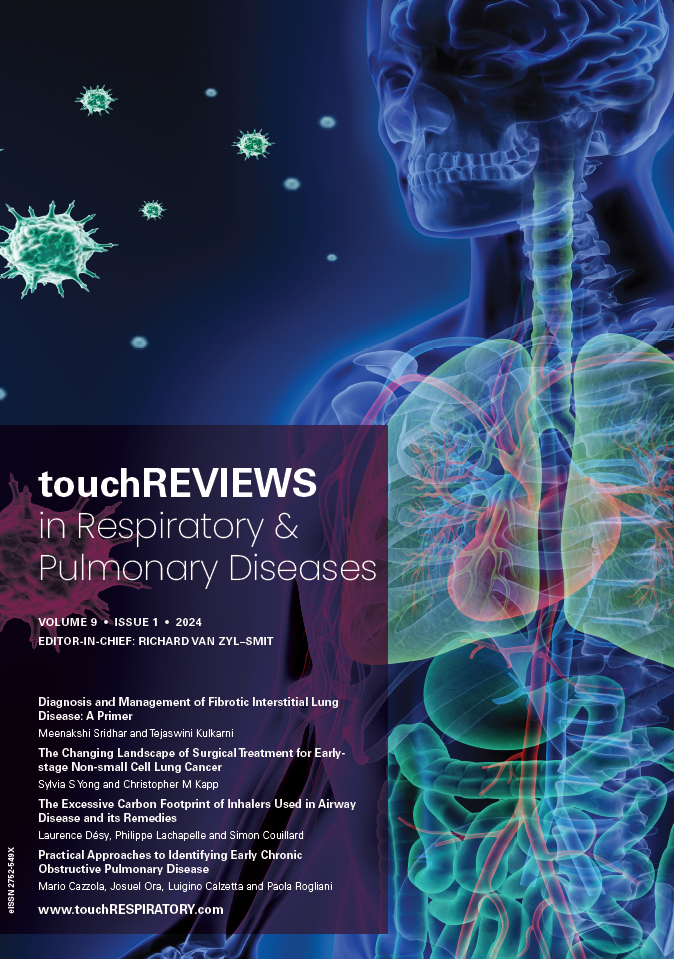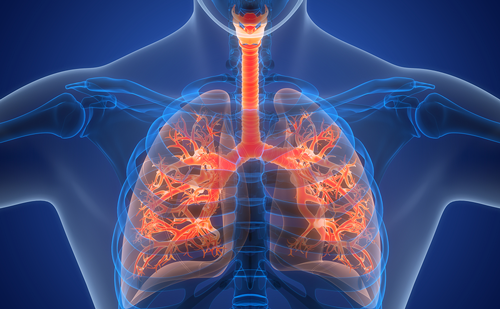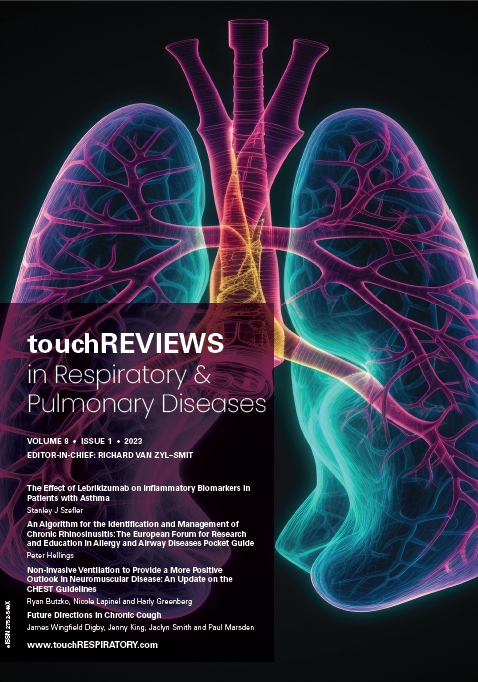touchREVIEWS in Respiratory & Pulmonary Diseases Volume 9, Issue 1, 2024
Welcome to the latest issue of touchREVIEWS in Respiratory & Pulmonary Diseases. This edition covers a range of insightful content on important topics, including airway diseases, asthma, chronic cough, chronic obstructive pulmonary disorders, interstitial lung disease, idiopathic pulmonary fibrosis, lung cancer and sleep-related breathing disorders.
As always, we would like to thank our expert authors, reviewers, media partners, editorial board members and our Editor-in-Chief for their continued involvement and advice.
Enjoy and happy reading!
Foreword
Welcome to the latest edition of touchREVIEWS in Respiratory & Pulmonary Diseases. As we continually strive to deliver cutting-edge research and insightful commentary, this issue is no exception, featuring a diverse array of articles that illuminate both emerging treatments and evolving practices within the field of respiratory and pulmonary medicine. We begin with a compelling […]
Commentary
Chronic cough is a cough that lasts 8 weeks or longer and is not due to serious underlying conditions. It is a common problem in primary care, accounting for up to 40% of referrals to pulmonologists.1 Common causes include rhinosinusitis, cough-variant asthma, eosinophilic bronchitis, smoking, certain medications (including angiotensin-converting enzyme inhibitors) and gastroesophageal reflux.2 Once […]
Practice Pearl
Approximately half of all smokers will develop chronic obstructive pulmonary disease (COPD), with a disease progression over several years before the spirometric threshold for diagnosis is reached.1 There is, therefore, a clear benefit in identifying patients with COPD as early as possible. Early detection, diagnosis and maintenance treatment of COPD, along with smoking cessation and exercise, may help to […]
Editorial
The topic of the carbon footprint of human activities is one frequently discussed worldwide. There have been conscious efforts across multiple fields, including healthcare, to reduce their carbon footprint. In Canada, 4.6% of greenhouse gases (GHG) are manufactured by the healthcare institutions, ranking it second worldwide. 1,2 The treatments for asthma and chronic obstructive pulmonary disease (COPD) […]
Review
The nasal airway serves as the primary entry point of air and oxygen into the body. It serves critical functions, such as providing a physical barrier against external irritants and pathogens and warming and humidifying incoming air.1 Consequently, disorders of the nose and nasal cavity may lead to pathological downstream effects by impacting the normal physiological […]
Acute exacerbations of chronic obstructive pulmonary disease (AECOPD) are the dominant cause of the worsening and high mortality of chronic obstructive pulmonary disease (COPD), and are associated with higher healthcare costs as part of COPD management. AECOPD is characterized by worsening respiratory symptoms, quality of life, respiratory function and gas exchange.1 It represents a challenge in […]
Interstitial lung diseases (ILDs) are a heterogeneous group of disorders characterized by inflammation and/or fibrosis.1 Pulmonary fibrosis develops due to repeated cycles of injury and impaired repair with fibroblast activation and migration with the resultant deposition of extracellular matrix components.2,3 This injury may be mediated by environmental, infectious or immune-mediated pathways. Over time, these pathways can become […]
Pentraxin-2 is a member of the pentraxin family of proteins, which includes C-reactive protein (CRP), pentraxin-2 and pentraxin-3.1–3 When initially discovered and characterized, pentraxin-2 was known as serum amyloid P (SAP) due to its isolation from amyloid deposits in humans; subsequently, SAP was found to be in the sera from circulating blood and, hence, its designation as […]
Lung cancer accounts for the highest cancer-related mortality and is the second most common cause of malignancy worldwide.1 Diagnosis at an early stage (ES) has a direct effect on management and survival rates. Overall, the 5-year survival rate from 2013 to 2019 in the US was 62.8% when the cancer was detected at stage I or […]
Paediatric sleep-disordered breathing Sleep-disordered breathing (SDB) is defined as the disruption of normal respiration and ventilation while asleep.1 SDB encompasses multiple sleep disturbances, ranging from mild snoring to obstructive sleep apnoea (OSA).1,2 OSA is characterized by episodic partial or complete obstruction of the upper airway, with associated desaturations, awakenings or arousals from sleep.3 Common symptoms include snoring, nocturnal […]

Trending Topic
Paediatric sleep-disordered breathing Sleep-disordered breathing (SDB) is defined as the disruption of normal respiration and ventilation while asleep.1 SDB encompasses multiple sleep disturbances, ranging from mild snoring to obstructive sleep apnoea (OSA).1,2 OSA is characterized by episodic partial or complete obstruction of the upper airway, with associated desaturations, awakenings or arousals from sleep.3 Common symptoms include snoring, nocturnal […]
Journal Archive
US Respiratory & Pulmonary Diseases is a peer-reviewed, free-to-access, annual journal comprising review articles, case reports, practice guides, theoretical discussions, and original research. It features balanced and comprehensive articles written by leading authorities, addressing the most important and salient developments in the field of respiratory.
Latest articles videos and clinical updates - straight to your inbox
Log into your Touch Account
Earn and track your CME credits on the go, save articles for later, and follow the latest congress coverage.
Register now for FREE Access
Register for free to hear about the latest expert-led education, peer-reviewed articles, conference highlights, and innovative CME activities.
Sign up with an Email
Or use a Social Account.
This Functionality is for
Members Only
Explore the latest in medical education and stay current in your field. Create a free account to track your learning.














